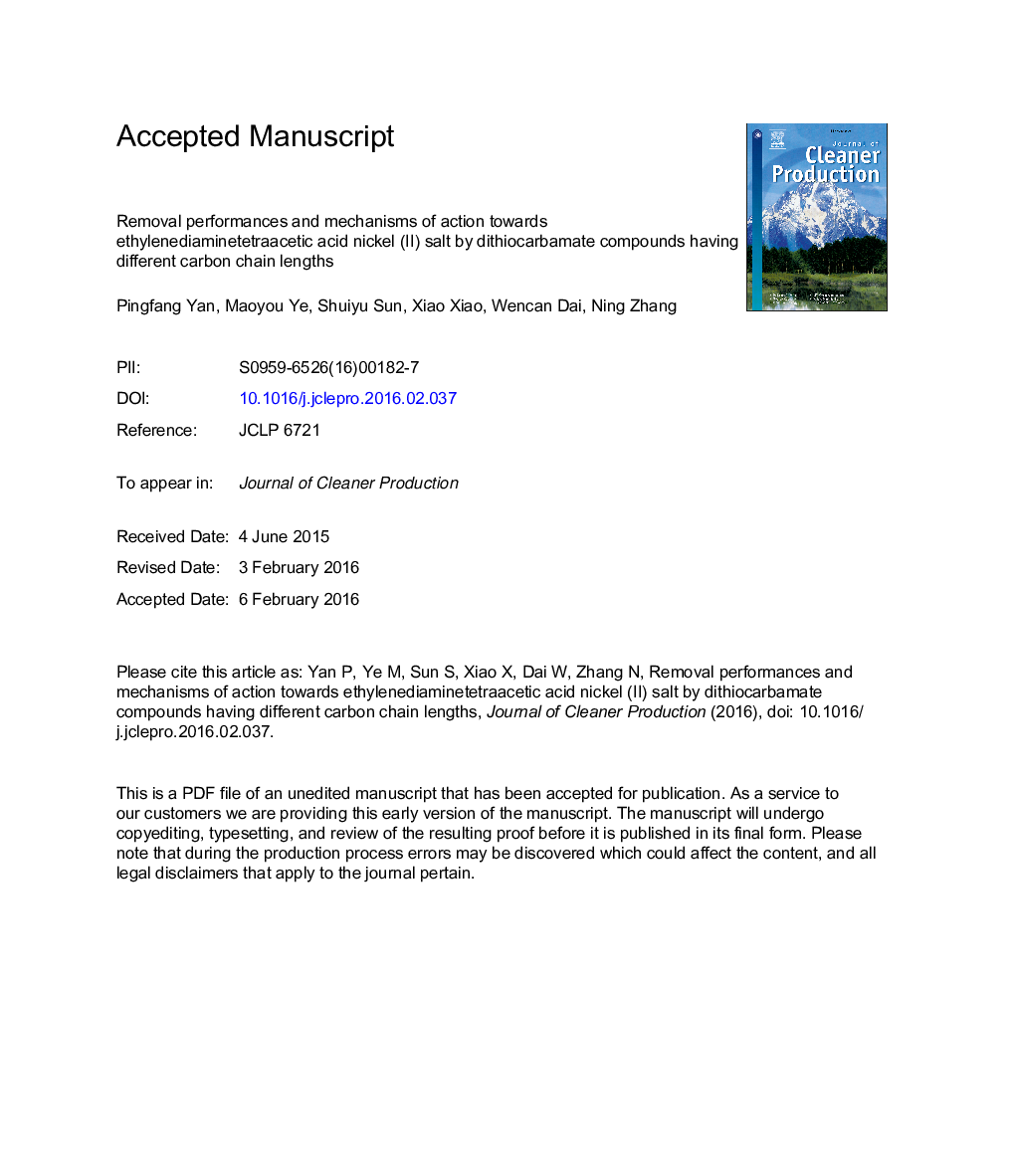| کد مقاله | کد نشریه | سال انتشار | مقاله انگلیسی | نسخه تمام متن |
|---|---|---|---|---|
| 8102426 | 1522127 | 2016 | 17 صفحه PDF | دانلود رایگان |
عنوان انگلیسی مقاله ISI
Removal performances and mechanisms of action towards ethylenediaminetetraacetic acid nickel (II) salt by dithiocarbamate compounds having different carbon chain lengths
دانلود مقاله + سفارش ترجمه
دانلود مقاله ISI انگلیسی
رایگان برای ایرانیان
کلمات کلیدی
موضوعات مرتبط
مهندسی و علوم پایه
مهندسی انرژی
انرژی های تجدید پذیر، توسعه پایدار و محیط زیست
پیش نمایش صفحه اول مقاله

چکیده انگلیسی
Wastewater containing EDTA-Ni (ethylenediaminetetraacetic acid nickel salt) must be treated due to its high toxicity, accumulation of nickel and non-degradability. In the present study, effect of carbon chain length of dithiocarbamate on the removal efficiency of Ni2+ from an EDTA-Ni solution has been analyzed. Sodium dimethyl dithiocarbamate, sodium diethyl dithiocarbamate and sodium dibutyl dithiocarbamate were used to study their Ni2+ removal performances from various types of EDTA-Ni solutions. Mechanisms of reactions between different dithiocarbamates and Ni2+ were also studied. The results indicate that the rate of Ni2+ increased with an increase in the carbon chain length of dithiocarbamate. Infrared spectral analysis inferred that the three dithiocarbamates had similar removal mechanisms despite having different carbon chain lengths: all showing Ni2+ chelation. The thiol of dithiocarbamate captures Ni2+ and tends to produce an insoluble chelate. The results from scanning electron microscope show that for longer carbon chain, the chelate product is more closely packed. Therefore, removed efficiency by sodium dibutyl dithiocarbamate was higher. Meanwhile coexistence of Cr6+, Cu2+ and Fe3+ inhibited the removal of Ni2+, but Zn2+ promoted it. Metal ion impact became clearer as carbon chain length increased. The chelation capability of the three dithiocarbamates with metal ions was: Cr6+Â <Â Fe3+Â <Â Ni2+ <Â Cu2+and Cu2+Â >Â Zn2+. Finally, these dithiocarbamates were tested in actual electroplating wastewater to validate our conclusions. After sodium dibutyl dithiocarbamate treatment, all residual metals' concentrations met the new tougher requirements announced by the Department of Environmental Protection of Guangdong province in Document No.25.
ناشر
Database: Elsevier - ScienceDirect (ساینس دایرکت)
Journal: Journal of Cleaner Production - Volume 122, 20 May 2016, Pages 308-314
Journal: Journal of Cleaner Production - Volume 122, 20 May 2016, Pages 308-314
نویسندگان
Pingfang Yan, Maoyou Ye, Shuiyu Sun, Xiao Xiao, Wencan Dai, Ning Zhang,